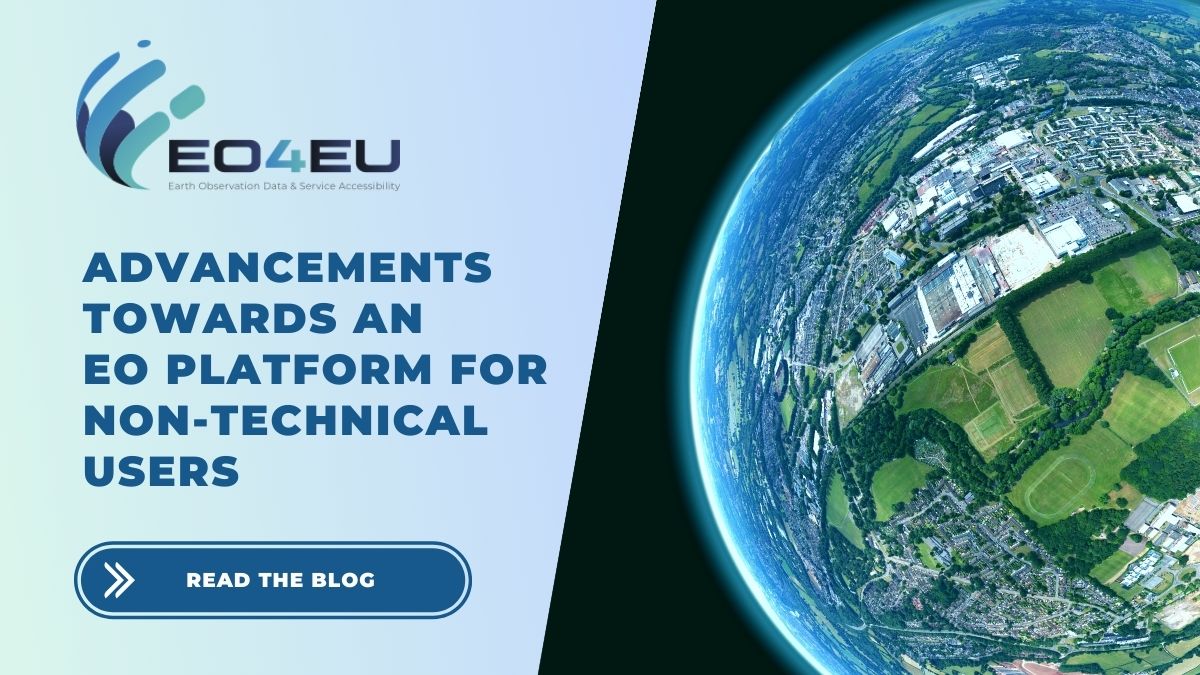Advancements towards an EO platform for non-technical users
Developing a new tool for maximum uptake lies in its ability to understand its target user requirements and understanding all the technologies at their disposal to make it happen.
With the EO4EU project now passing its first year, this blog series will tackle the progress made towards the project’s “Requirements Elicitation and Conceptual Framework Specification" activities.
User requirements gathered
In the first year of the project, user requirements for the EO4EU Platform were gathered and are being consolidated as of the end of the first year of the project.
This activity, coordinated by ECMWF, will define operational procedures from the end-user’s perspective and the business processes that map and model all the steps of the planned research and implementation process from start to finish.
Multiple sub-tasks were identified, including end-user survey creation and analysis, identifying public communication channels, and facilitating end-user access to the platform for testing.
To source these requirements for the platform, a survey was run tailored to both EO4EU consortium members, in particular the use cases, as well as potential users external to the project. An early access program was offered to these external survey participants to engage a larger audience. The survey covered various aspects, such as data requirements, storage and access, processing capabilities, algorithms, and authentication. The deadline for the survey was April 15, 2023. Following this, external user requirements were consolidated, and the first draft of the business process model was developed.
Building on best-of-breed technologies
As one of the foundational activities of the project led by SISTEMA, various research areas were analysed and the best technologies to base EO4EU’s innovation strategy on were identified. This was achieved through an understanding of the user requirements.
Brainstorming sessions and discussions yielded five research areas, each with its own sub-areas. These areas included data accessibility and exploitability, processing capabilities and scale-up, algorithm capabilities, data presentation, communication, and delivery, and intellectual property management tools.
The activity concluded with the delivery of the Research and Innovation Landscape Analysis Report in February 2023.
Technical Specs, Interoperability Requirements, and Scalability Analysis
The EO4EU Platform will be composed of several parts or “modules”, such as the knowledge graph, system and services, machine learning, graphical user interface, and data storage. These modules need to work together to deliver the innovative functionalities that will make EO data more accessible to non-technical users.
Towards this, technical and interoperability requirements and conducting a thorough review of system requirements for each module was led by the University of Athens and was completed in the first year of the project. Much of this work was also based on the Research and Innovation Landscape analysis report.
With these final technical requirements, class and sequence diagrams for the first phase gathered, the activity moves onwards to the next phase.
Conclusion
Gathering user requirements, having a good understanding of all the moving parts of the conceptualised EO4EU Platform, and knowing what it would take to make them work together was one of the main priorities in the first year of the project. With these significant milestones achieved, EO4EU has laid the foundation for the successful implementation of the EO4EU Platform. Stay tuned for further updates!
